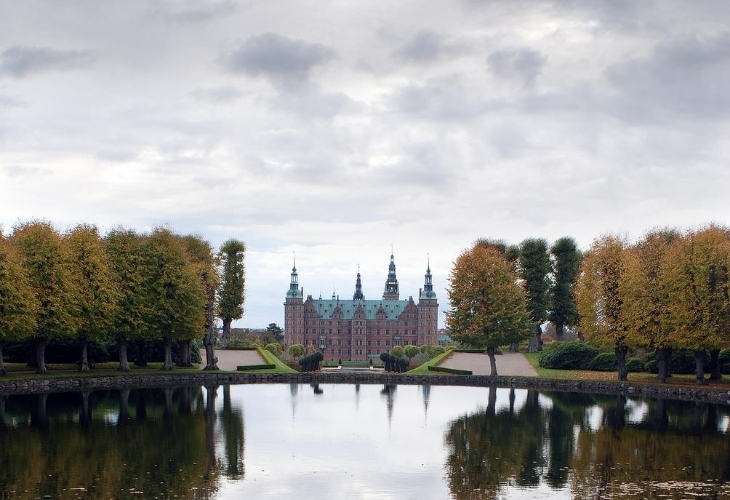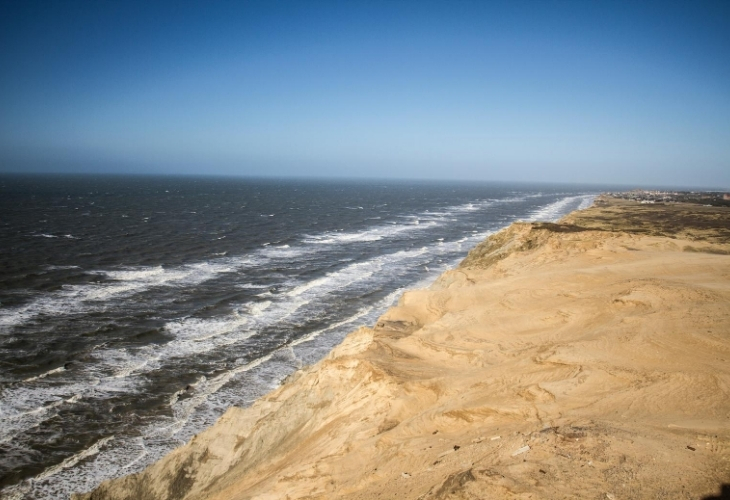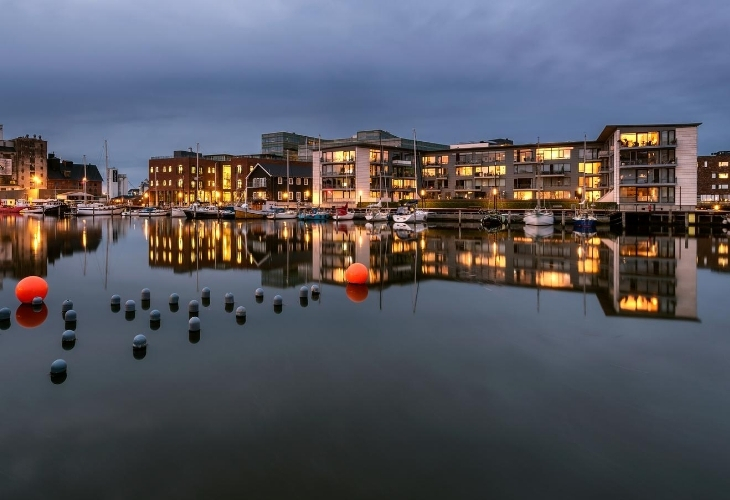Suppose you have given up on the allure of city life since they all look alike and have washed your hands off the shopping malls' replicas mushrooming all the cities. And have grown tired of the same boutiques claiming to sell the best of whatnot, yet still, their buyers end up looking the same, doing ramp walk up and down the street. Lookup for some quaint city, town and village to feel the real sense of journey, places which are not yet completely tainted by carbon copy produced infrastructure.
Copenhagen
Although it is a capital city and by nature of globalization, the capital becomes cosmopolitan. However, the city's town planning has made sure the history and the beauty are kept intact. A strict level of monitoring, if not total, in the heights of the new buildings have made Copenhagen one of those very few cities left, whose skyline is not crowded with skyscrapers. Copenhagen has pioneered the implementation of certain ideas that have deeply benefited the city's health; one such concept is the “walking streets”. The public does not see them as an imposition. Still, the idea was and is collectively understood and exercised to tackle the space issue, environmental hazard and to preserve the beauty and culture of the city.

Strøget, walking zones, and a car-free shopping area in Copenhagen are among the best tourist attractions. The Danes have successfully developed one of the longest “gågader”, meaning pedestrian network in Europe, which included their university area, cathedrals, markets and historical centres.

Important to note and be thankful for is the fact that during the world wars, for political reasons, the city did not face massive damage compared to the rest of Europe. Luckily for the citizens, the beautiful historic buildings and medieval streets were protected. Also, the city councils' continuous effort safeguard the homogeneousness of style and historic appearance of the city. It created a benchmark for many in terms of architecture and style and not only for them but for the whole world to come and enjoy the urban yet Hygge style of living. The cosy and intimate old narrow, cobbled streets next to colourful houses, charming coffee shops and vintage boutiques have become postcard images of joy-giving and romantic atmospheres.
Gilleleje
Sojourn to an Earthy Fishing Village
If you are in Copenhagen and want an unpretentious getaway to one of the fishing villages, go to Gilleleje. Best place to immerse in the idyllic atmosphere, look at the horizon from the pier, walk in peace by the sea. Occasionally, for some activity, pay a visit to the fishing harbour, which is, thankfully, not amplified cosmetically to attract tourism. If your seaside imagination is about the seagulls flocking the harbour picking fish or just sitting there on the pier or gunwale, bickering with their mates, the colourful boats slowly swaying with the waves and locals going about their business animatedly, then this is the place for you.

One of the other pleasurable ventures during your stay, apart from photographing the gorgeous thatched fisherman’s cottages and blossoming gardens is, eating fresh fish delicacies at the local restaurants.

Day trips from Gilleleje could include Frederiksborg Castle, Kronborg Castle, Fredensborg Castle, Esrom Monastery, etc. All of which can be reached easily by train/busses from Gilleleje.
 |  |  |
Skagen
Skagen is one of those places which puts you face to face with the magnanimous nature. A wild streak, if you will, in Denmark's refined fabric and for all the right reasons.

Skagen light, like a beacon, drew the painters to her shores from 1870 onwards till the end of the century. It came to be known as “blue hour”, a distinct luminous light that blended the sky and the sea during the evening. Every summer, the village became a melting spot of Scandinavian artists called “Skagen Painters”. Not just painters but also writers, poets, some affluent lot and nobility too. What art came out of the famous artists here put the Skagen on the global map.
 |  |  |
Michael and Anna Ancher, Peder Severin Krøyer, Karl Madsen, Laurits Tuxen, Marie Krøyer, Carl Locher, Viggo Johansen and Thorvald Niss from Denmark, Christian Krohg and Eilif Peterssen from Norway and Oscar Björck and Johan Krouthén from Sweden. Their regular gatherings were at the Brøndums hotel; it became so famous that the dining room became a part of the Skagen Museum, which commemorates the artists’ brilliant work.

Tourism ensued with the influx of artists, and more inns and restaurants sprung up to cater for them all and today, they form an important part of the town’s revenue.
A veritable fishing village Skagen also boasts of a wide variety of birds, and birdwatchers flock from all over Denmark and Germany, Norway and Sweden, especially in April–May, early June, and to a lower temperature in August–November.

Grenen is the northernmost tip of Skagen. Or Skagen Odde peninsula, as it is called, is a unique sandbar created by two clashing seas, the Kattegat coming from the Sweden side and Skagerrak from the north, making the area very treacherous because of the unpredictable currents. It’s awesome to know that someday the sandbar's stretch - since it's continuously extending, albeit slowly - will connect Denmark and Sweden.

Tip: Look for the 'Sandormen' tractor in the car park, which will take you to the northern tip.
Råbjerg Mile is the largest migrating sand dune in Denmark. At a height of 40 meters above sea level, it makes a good vantage point for the surrounding area.
The migrating dunes resulted from severe desertification some 300 years back, but measures were taken to stabilize the drift with large plantations of fir trees, grasses and bushes. Every year the winds shift the dunes approx—18 meters northeast. In the 17th & 18th century the fickle dunes pretty much played the part of a hormonal teenager driving the residents off the coast. Making light of the matter, however, doesn’t undermine the power of these dunes. Nevertheless, today it does make the landscape quite spectacular for the travellers and still migrates at will.
 |  |
Odense
Legend has it; Odense is the home of “Odin”, the Nordic God hence the name; a derivation from “Odins”, which means "Odin's sanctuary". Archaeological excavations show the early Viking occupation of the Odense area. King Canute IV of Denmark (Knud den Hellige), considered the last Viking king, was murdered by angry peasants over his high taxation policy in the city. In few years, he was declared a saint and a church was erected in his name, which attracted pilgrims in the middle ages.

With a tumultuous history of over 1000 years, Odense played key roles in shaping Denmark from the Middle Ages and Renaissance to the present state. The 8 km canal from Odense Harbour to Odense Fjord catapulted the city into increased trade, and more people came to work and lived in the port city. The face of the city has dramatically changed over time. Back then, it was a strong commercial centre for traders and artisans but building a railway across Funen in 1865 showed exponential industrial expansion.
 |  |
Since the 1960's Odense has been the home of many trade show at the huge exhibition centre (Odense Congress Center). But today, it is also one of the more culturally dense centre points of the nation, as noteworthy museums and galleries were built. World's interest further catapulted when the city started hosting the popular music festival Tinderbox, the urban festival Karrusel, Hans Christian Andersen Festivals and Odense International Film Festival, to name a few events that each year generates an energetic and pulsating environment in Odense.
The early 20th century propelled the city to draw even bigger expansion plans; Odense now is rapidly establishing itself as a centre for robotics and computer technology, the financial crisis.
Why should you visit?
As travellers, one doesn’t concern too much about another country's socio-political standing and just want to enjoy the beauty of their land and culture. Odense doesn’t disappoint here; the old town has plenty of well-preserved buildings giving a fair idea about how life was during the Middle Ages.

Laced with a storybook vibe, since it’s more famous amongst fairy tales’ fans as the birthplace of Hans Christian Andersen b.1805, Odense immortalized the writer’s birth house into a museum dedicated to his life and works. Manuscripts, paper cuttings and personal belongings, along with a collection of illustrations and other visual arts inspired by H.C.A’s poetry, are on display here.
The popularity of Hans Christian Andersen is of such magnitude that it drew a crowd from all over when some passionate residents decided to hold a festival in his honour in 2013. Every year a week-long festival is celebrated in late August, and about 500 cultural and musical events for people of all ages bring this historic city of Odense to life. In the parks and buildings, you'll find theatre performances, street art and street performances in medieval streets, concerts, light shows, art demonstrations, and of course the storytelling!

Must see
The City Museum (Møntergården) is an exceptional museum that summarises the history of Odense.
Funen´s Art Museum (Fyns Kunstmuseum), which opened in 1885, is one of Denmark's oldest art museums.
The Funen Village (Den Fynske Landsby) - come here to experience the true atmosphere of a Funen Village around 1850. The village holds more than 25 houses and farms from all over Funen and is one of Denmark´s biggest open-air museums.
Odense River (Odense Å) runs through several towns and is 54 km longest on the island of Funen. There are many shops along the river for the adventurer to rent fishing equipment from, like kayaks, canoes, etc.

Aarhus
One of the oldest cities in Denmark is said to be older than 770 AD and claims to be Jutland's capital. Once a Viking settlement, ‘Or-hoose’, as it’s pronounced locally, is on a fast track to becoming one of the most versatile cities not only in Denmark but in all of Scandinavia. This small metropolis has a variety of areas within itself which doesn’t make it monotonous. Aarhus knows this and takes pride in striking a balance in maintaining its historical feel and flaunting its modern architecture for youthful pace. Being the second-largest city, it is a hub of thousands of students attending University. The population is over 300,000. Naturally, the infrastructure is developed to satisfy all of them, such as an active downtown centre with many fine walking streets, good shopping, and many excellent restaurants of fine dine and casual hangouts. Not a very big city where you would feel like being lost, on the contrary, it is manageable to walk around to see all the main sights.

Must See
Den Gamle By (The Old Town) is an open-air museum comprising 75 ancient buildings collected from 20 different towns across the country. On Christmas, this town is beautifully decorated, giving it a perfect atmosphere for festivities.
Århus Domkirke (Aarhus Cathedral), first built in the 12th century, is 93 m long which is the longest in church/cathedral of Denmark housing amazing frescos.
Strøget (Stroget) is the long walking street in Aarhus and visited for shopping, numerous cafes and restaurants.
Vadestedet (The Ford) is one of the oldest regions in Aarhus. Vadestedet is essentially a waterway that once ran through the city is now a social hangout place lined up with pubs, bars, cafes and restaurants, especially on weekends; it is blooming with younger people.
Store Torv (The Large Square), in front of the Aarhus Cathedral, was once a place to sell food, entertainment and a host of other social activities.
Latinerkvarteret (The Latin Quarter), for evenings, immersed in the local flavour. These streets are loaded with special stores, restaurants and cafés.
Århus Bymuseum (Aarhus City Museum), located in the old railway station building. The museum is an excellent showcase in displaying the local cultural history from the Vikings age up until the present.
In addition, the art and history aficionados would not want to miss - The Natural History Museum, ARoS Aarhus Art Museum, Aarhus Theatre, The Customs Chamber (Toldkammeret), Aarhus School of Architecture, Mejlgade and Skolegade Streets (Mejlgade og Skolegade), Aarhus City Hall (Århus Rådhus) and much more.
 |  |  |
Denmark, the originator of “Hygge” indeed lives in this fashion. And to truly experience Denmark one has to be in the state of “Hygge” - mood of cosiness and comfortable conviviality with feelings of wellness and contentment.
| Tags ~ Places to visit in Denmark, Denmark tourist spots, Why you should visit Denmark, Reasons to visit Denmark |
.png)









